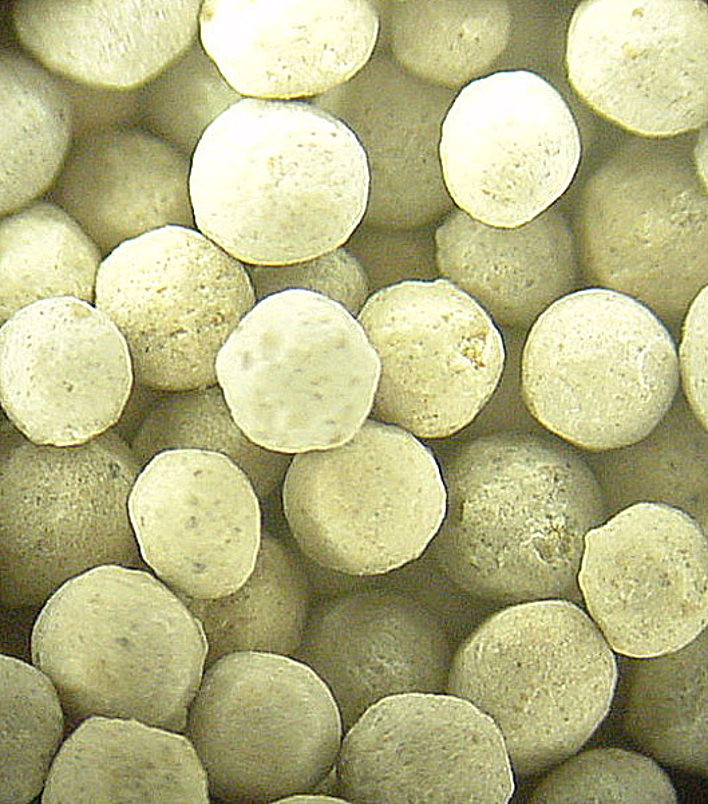Deacidification
Excess carbonic acid (carbon dioxide) often occurs in natural groundwater or spring water. This water is referred to as acidic water. Contents of up to 100 mg/l CO2 are possible. Before being released into a supply network, this water must be deacidified to a state of equilibrium. Different processes are used, depending on the hardness and pH value.
Chemical deacidification
Filtration via materials containing calcium carbonate (semi-burnt dolomite, marble or Jurassic limestone) causes neutralisation of the free aggressive carbonic acid until a lime-carbonic acid equilibrium is achieved. The free carbonic acid reacts with the calcium carbonate from the filter material and slowly dissolves it. For this reason, deacidification filters must be refilled regularly.
Small amounts of iron can be removed at the same time. Pre-filtration is required for larger iron contents, since iron deposits affect the effectiveness of the material.
Chemical deacidification is mainly used in small systems and in water with low hardness.
Physical deacidification
With sufficient mineralisation or hardness, the excess carbon dioxide can also be physically stripped from the water. This can be done by atomising, in percolator columns or in downstream flatbed aerators. In all cases, the excess CO2 is expelled from the water up to the equilibrium pH. In some cases, other gases such as hydrogen sulphide, methane or radon are also expelled from the water in this way. Physical deacidification is also used after the membrane softening process.
Subdimensionalised limestone filtration
In many cases, a combination of physical and chemical deacidification is also possible. This enables ideal degrees of hardness to be set. The raw water is first hardened to the desired degree (chemical deacidification), and the remaining deacidification takes place physically.
We would be happy to assist you with the dimensioning of a deacidification system and with finding the optimum configuration. Please contact us!



